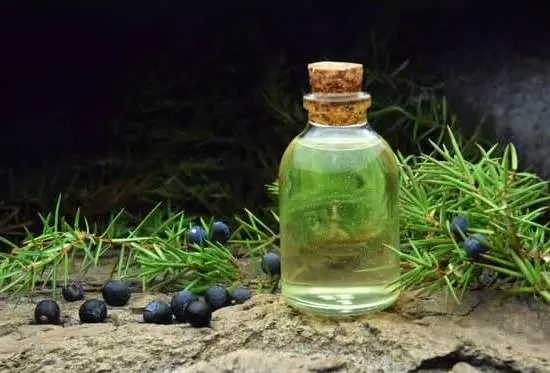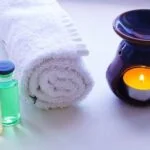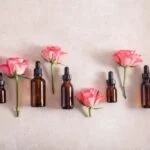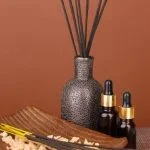How did aromatherapy start? This scholarly article aims to explore the origins and evolution of aromatherapy, shedding light on its ancient roots, influences from traditional medicine, and the modern scientific understanding and applications. Aromatherapy has become increasingly popular in holistic healthcare, and this article will delve into the history, pioneers in the field, and emerging trends for the future.
Aromatherapy is a practice that uses essential oils and aromatic plant compounds to enhance physical and psychological well-being. The use of aromatic plants for medicinal purposes dates back thousands of years, making it one of the oldest healing practices known to mankind. Scholars have traced aromatherapy’s origins to ancient civilizations such as Egypt, China, India, Greece, and Rome.
Traditional medicine systems such as Ayurveda, Traditional Chinese Medicine (TCM), and Indigenous healing practices also played a significant role in shaping the foundations of aromatherapy. These systems recognized the therapeutic properties of plant extracts and utilized them for their healing properties. As such, the influence of traditional medicine is deeply intertwined with the beginnings of aromatherapy as we know it today.
The Ancient Origins of Aromatherapy
Aromatherapy, the use of essential oils and plant extracts for therapeutic purposes, has a rich history that dates back thousands of years. The ancient origins of aromatherapy can be traced to various civilizations around the world, where aromatic plants were valued for their healing properties and spiritual significance. Here are some key points about the ancient origins of aromatherapy:
- Ancient Civilizations: In ancient Egypt, aromatic oils were used in religious rituals, embalming practices, and medical treatments. The Egyptians believed in the power of fragrant oils to promote healing and well-being. Similarly, in ancient China and India, herbal medicine and aromatic substances played a significant role in traditional healthcare practices.
- Aromatic Traditions: Indigenous cultures across the globe have also utilized aromatic plants for their medicinal and spiritual benefits. From Native American smudging ceremonies with sage and sweetgrass to Australian Aboriginal use of eucalyptus leaves for healing, these traditions showcase the universal appeal of aromatherapy throughout history.
- Early Documentation: The earliest known written records of aromatherapy date back to around 3000 BCE, with evidence found in ancient clay tablets from Mesopotamia detailing the use of cedarwood oil for its healing properties. These early writings provide valuable insights into how aromatherapy was practiced in early civilizations.
Overall, the ancient origins of aromatherapy highlight its enduring presence in human culture and healthcare practices. The knowledge and wisdom passed down through generations continue to inform modern applications of aromatherapy, demonstrating its timeless appeal and relevance in today’s world.
The Influence of Traditional Medicine on Aromatherapy’s Beginnings
Aromatherapy, as we know it today, has deep roots in traditional medicine practices from ancient civilizations. The use of aromatic plants and essential oils for therapeutic purposes can be traced back thousands of years, showing that the influence of traditional medicine played a crucial role in the beginnings of aromatherapy.
The ancient origins of aromatherapy can be found in various cultures such as Egypt, China, India, and Greece. These ancient civilizations recognized the healing properties of aromatic plants and utilized them in medicinal practices. One example is the use of plant extracts and aromatic substances in the embalming process in ancient Egypt, showcasing the early understanding of the therapeutic benefits of essential oils.
To understand how did aromatherapy start scholarly article, it is important to recognize that traditional healing systems such as Ayurveda in India and Traditional Chinese Medicine (TCM) have long incorporated the use of aromatic plants and their extracts for physical, emotional, and spiritual well-being. In Ayurveda, the practice of using plant-based essential oils for massage, inhalation, and other therapies is known as “snehana,” while TCM includes herbal medicine formulas that often include aromatic substances.
The influence of traditional medicine on aromatherapy’s beginnings highlights the rich history and cultural significance of using aromatic plants for health and wellness. This historical foundation has paved the way for modern applications of aromatherapy in healthcare and continues to inspire further research into its potential benefits.
- Ancient Egyptian use of aromatic substances in rituals
- Incorporation of aromatic plants in Ayurvedic healing traditions
- Utilization of essential oils in Traditional Chinese Medicine
The Evolution of Aromatherapy in Western Culture
Aromatherapy has a long and rich history, with its roots extending back to ancient civilizations. However, it was not until the Middle Ages that the practice of aromatherapy began to take shape in Western culture. During this time, the use of aromatic plants and essential oils became more prominent, particularly in relation to their potential healing properties.
The Influence of Traditional Medicine on Aromatherapy’s Beginnings
The evolution of aromatherapy in Western culture can be attributed in part to the influence of traditional medicine practices from other cultures, such as those found in Egypt, Greece, and Rome. These ancient societies were known for their use of aromatic substances for medicinal and spiritual purposes, which ultimately laid the foundation for the development of aromatherapy in Western civilization.
During the Renaissance period, interest in herbal medicine and natural remedies experienced a resurgence, leading to an increased awareness and appreciation for the therapeutic properties of essential oils. This marked a significant turning point in the evolution of aromatherapy, as it became more integrated into mainstream Western medical practices.
The Evolution of Aromatherapy Practice in Modern Times
As time progressed, advancements in technology and scientific research further propelled the evolution of aromatherapy in Western culture. The development of new extraction methods for essential oils, as well as a better understanding of their chemical composition and biological effects, allowed for a more systematic approach to aromatherapy practice.
In addition, key figures such as Rene-Maurice Gattefosse and Jean Valnet played instrumental roles in popularizing aromatherapy through their research and clinical applications. Their work helped solidify aromatherapy as a legitimate therapeutic modality within Western healthcare systems. Today, aromatherapy continues to evolve through ongoing research and innovation, expanding its reach across various medical disciplines and wellness practices.
Pioneers in Aromatherapy Research and Practice
The history of aromatherapy can be traced back to ancient civilizations, where the use of aromatic plants for medicinal and therapeutic purposes was common. The practice of using essential oils and plant extracts can be found in early Indian, Chinese, Egyptian, and Greek medicine. These ancient cultures recognized the healing properties of certain scents and used them for various health benefits.
One of the earliest recorded uses of aromatherapy is found in ancient Egypt, where aromatic substances were used in religious rituals, embalming processes, and for medicinal purposes. The Egyptians were known to have a deep understanding of the therapeutic properties of essential oils and used them in conjunction with massages to treat various ailments. Similarly, in ancient China and India, aromatic plants were used for their healing properties as well as for spiritual and religious purposes.
The term “aromatherapy” itself was coined by René-Maurice Gattefossé, a French chemist who is considered one of the pioneers of modern aromatherapy. In the early 20th century, Gattefossé accidentally discovered the healing properties of lavender oil when he applied it to a burn he sustained in his laboratory.
This led him to further research the effects of essential oils on skin conditions and wounds, paving the way for the scientific study of aromatherapy. Other influential figures in the development of aromatherapy include Marguerite Maury, who popularized the use of essential oils in massage therapy, as well as Jean Valnet and Robert Tisserand, who furthered scientific research on the therapeutic benefits of essential oils.
As we continue to explore how did aromatherapy start scholarly article it becomes evident that these pioneers laid the foundation for modern aromatherapy practices and research. Their contributions have allowed aromatherapy to evolve into a recognized form of complementary medicine with a growing body of scientific evidence supporting its effectiveness.
The Science Behind Aromatherapy
Aromatherapy is the practice of using essential oils and aromatic plant compounds to improve physical, emotional, and mental well-being. The use of aromatics for healing dates back thousands of years and has been a part of traditional medicine practices in various cultures. However, the scientific understanding of how aromatherapy actually works has only recently begun to emerge.
Essential Oils and Their Properties
Essential oils are highly concentrated extracts from plants, such as flowers, herbs, or trees. These oils contain compounds that give them their characteristic aroma and potential therapeutic benefits. Different essential oils have different properties, such as antibacterial, anti-inflammatory, or calming effects. When inhaled or applied to the skin, these properties can affect the body and mind in various ways.
The Mind-Body Connection
One of the key aspects of the science behind aromatherapy is its impact on the mind-body connection. Inhalation of essential oils can stimulate the olfactory system, which is directly connected to the brain’s limbic system – the part responsible for emotions, memories, and arousal.
This connection explains how certain scents can evoke specific emotional responses or trigger memories. Additionally, it is believed that inhalation or topical application of certain essential oils can influence physiological functions such as heart rate, blood pressure, and stress levels.
Evidence-Based Research
While anecdotal evidence has long supported the use of aromatherapy for various health benefits, modern scientific research has started to catch up. Studies have shown promising results in areas such as reducing anxiety and depression symptoms, improving sleep quality, alleviating pain, and enhancing cognitive performance through the use of specific essential oils. As researchers continue to investigate the mechanisms behind these effects, aromatherapy is gaining recognition as a complementary therapy with potential application in healthcare settings.
As our understanding of the science behind aromatherapy continues to grow, so does its potential for integration into mainstream healthcare practices. The next section will explore modern applications and benefits of aromatherapy in various settings.
Modern Applications and Benefits of Aromatherapy
Aromatherapy has evolved from its ancient origins to become a popular holistic practice in modern times. The use of essential oils in aromatherapy has expanded beyond traditional rituals and ceremonies to include various applications in healthcare, wellness, and everyday life.
One of the most common modern applications of aromatherapy is within the field of mental health and wellbeing. Research has shown that certain essential oils have calming and mood-boosting effects, making them effective for reducing stress, anxiety, and depression. For example, lavender oil is often used to promote relaxation and improve sleep quality, while citrus oils like lemon and orange are known for their uplifting properties.
In addition to mental health benefits, aromatherapy is also widely used for physical health purposes. Certain essential oils have anti-inflammatory, antimicrobial, and analgesic properties that make them suitable for treating various conditions such as headaches, muscle pain, digestive issues, skin problems, and respiratory issues. For instance, peppermint oil has been shown to help relieve headaches and migraines when applied topically or through inhalation.
| Modern Applications | Benefits |
|---|---|
| Mental Health | Reduces stress, anxiety, depression; promotes relaxation |
| Physical health | Anti-inflammatory properties; relief from headaches, muscle pain |
As the popularity of aromatherapy continues to grow, its applications have extended into various settings including hospitals, hospices, spas, yoga studios, and even corporate environments. Aromatherapy is commonly integrated into massage therapy sessions to enhance the therapeutic experience and promote overall wellness. It is also used in complementary care practices such as acupuncture and chiropractic treatments to support the healing process.
,the modern applications of aromatherapy offer a holistic approach to health and wellbeing by addressing both physical and emotional aspects. Its natural and non-invasive nature makes it an appealing complementary therapy or self-care practice for individuals looking for alternative ways to improve their quality of life.
The Future of Aromatherapy
Aromatherapy has a long and rich history, dating back to ancient civilizations where the use of essential oils for healing and therapeutic purposes was common practice. The future of aromatherapy is an exciting one, with emerging trends and continued research shedding new light on the potential benefits of this holistic practice.
One emerging trend in aromatherapy is its integration into mainstream healthcare practices. As more people seek natural and alternative treatments for various ailments, the use of essential oils and aromatherapy techniques is becoming increasingly popular. Hospitals, clinics, and wellness centers are incorporating aromatherapy into their treatment protocols, recognizing the potential for its healing properties.
Continued research into the science behind aromatherapy is another important facet of its future. Scientists are delving deeper into understanding how essential oils work at a molecular level, as well as their effects on the body and mind.
This research has the potential to unlock new applications for aromatherapy in areas such as mental health, pain management, and overall well-being. As we continue to uncover the mechanisms by which aromatherapy exerts its effects, we can expect to see even more evidence-based uses for this ancient practice.
Overall, the future of aromatherapy looks bright, with an increasing number of people embracing its benefits and a growing body of scientific evidence supporting its efficacy. It is clear that this ancient practice will continue to evolve and find new relevance in our modern world. And as research in this field advances, we can expect to see even more innovative applications for aromatherapy in healthcare and wellness.
Conclusion and Implications for Aromatherapy’s Role in Healthcare
In conclusion, the origins of aromatherapy can be traced back to ancient civilizations, where aromatic plant extracts were used for their therapeutic benefits. The influence of traditional medicine from cultures such as Egypt, China, and India played a crucial role in shaping the beginnings of aromatherapy. As the practice of aromatherapy evolved in Western culture, pioneers in research and practice further developed its scientific basis and modern applications.
Today, aromatherapy is widely recognized for its potential health benefits, including stress reduction, relaxation, improved sleep quality, and relief from various physical and psychological ailments. The science behind aromatherapy continues to expand as researchers study the mechanisms by which aromatic compounds interact with the body’s physiological and psychological systems.
Moving forward, the future of aromatherapy holds promising potential as emerging trends and continued research pave the way for its integration into mainstream healthcare practices. As more evidence-based studies support the efficacy of aromatherapy, its role in healthcare is likely to expand, offering complementary or alternative treatment options for various conditions. It is important for healthcare professionals to continue exploring the benefits and applications of aromatherapy in order to enhance patient care and well-being.
Frequently Asked Questions
How Did Aromatherapy Originate?
Aromatherapy originated thousands of years ago, with the use of aromatic plants and natural oils for medicinal and therapeutic purposes. It has been a part of ancient healing practices in various cultures such as Chinese, Egyptian, Greek, and Roman.
What Is the Theory Behind Aromatherapy?
The theory behind aromatherapy is based on the idea that inhaling the aroma of essential oils can stimulate brain function and promote physical and emotional well-being. These essential oils are believed to have healing properties that can affect mood, alleviate stress, and improve overall health.
Who Is the Father of Aromatherapy?
The father of aromatherapy is often considered to be René-Maurice Gattefossé, a French chemist who coined the term “aromatherapy” in 1937. He extensively researched the medicinal properties of essential oils after experiencing their healing effects when he accidentally burned his hand and used lavender oil for treatment. His work helped popularize aromatherapy as a holistic healing practice.

Are you looking for a natural way to improve your health and wellbeing?
If so, aromatherapy may be the answer for you.





